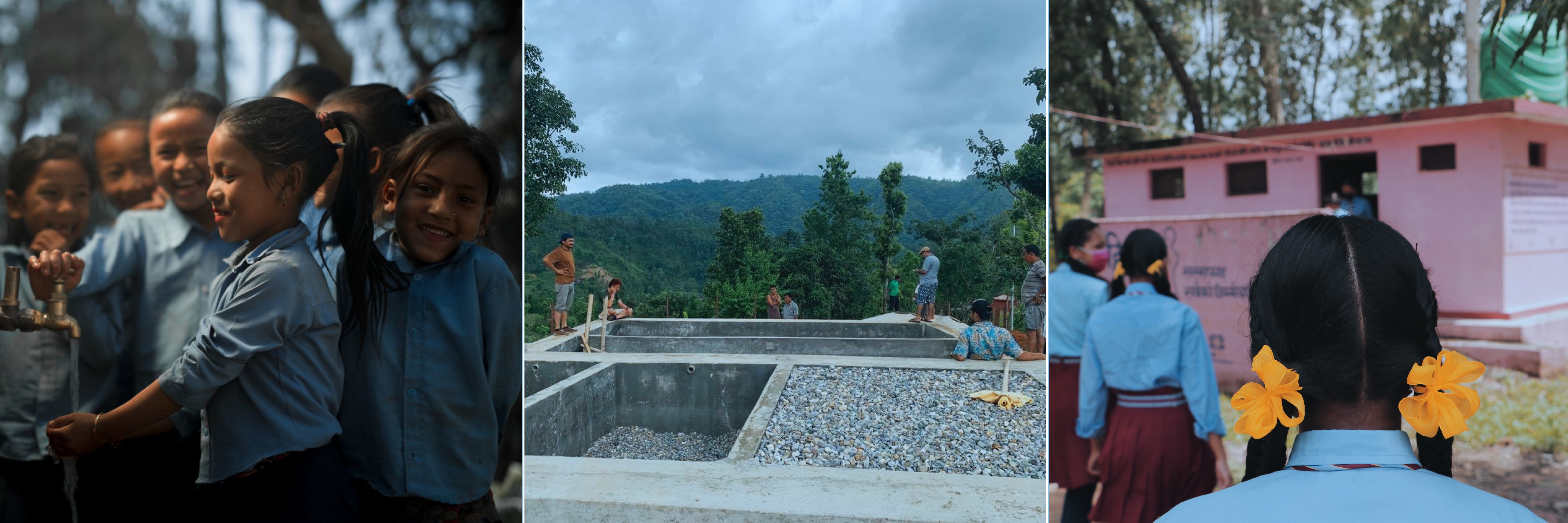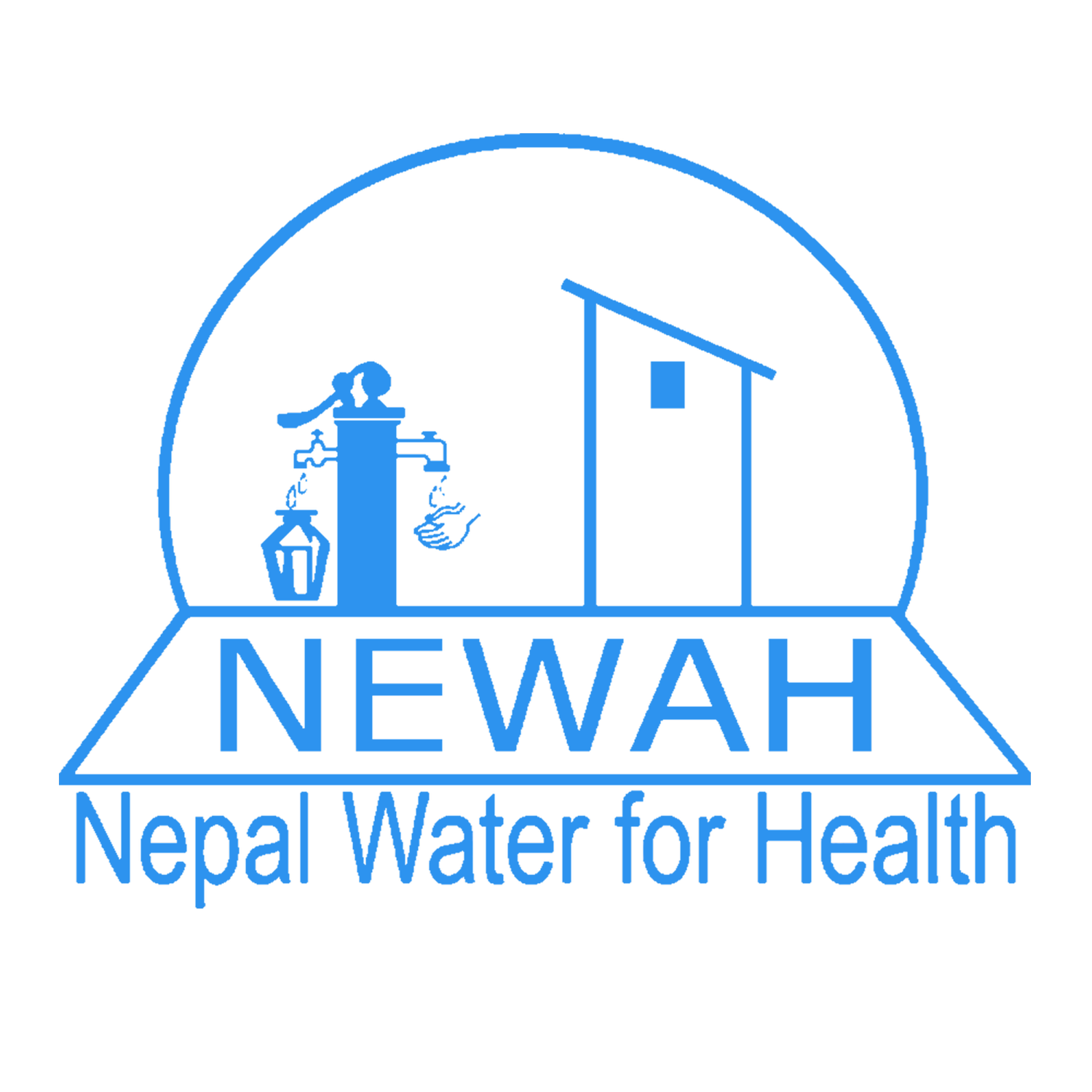WASH Service Delivery

Drinking water supply
NEWAH supports the construction of communal and on-plot (yard) water taps, water source protection, and rainwater harvesting in the hills, and installation of tube wells, improved dug wells and deep boring systems in the Terai plains to ensure access to drinking water in the communities. Our water supply systems are greatly influenced by the topography with gravity-fed systems aided by solar or motorized pumping technology dominating the hills and groundwater-based systems dominating the plains.
Water meters are installed in all water points under the yard connection where the tariff is based on the volume of water used. Most Water and Sanitation Users Committees (WSUCs) use increasing block tariffs, keeping the initial 5-10 cubic meters per month at an affordable rate, and gradually increasing the tariff for higher water consumption. In communal connections, however, water meters are generally not installed, and the Operation and Maintenance (O&M) funds are collected based on a monthly flat rate decided by WSUC.
Before the implementation of a water supply project, the source is mapped and tested for various physical, chemical, and biological parameters including taste and order, temperature, TDS (Total Dissolved Solids), electrical conductivity, turbidity, ammonia, nitrate, pH, total hardness and coliform. Additionally, in the plains, the source is tested for heavy metals such as Arsenic and Iron. The water is tested again post construction where every tap/well water is sampled and tested for compliance with the standard permissible limits of Nepal National Drinking Water Quality Standards 2005 to ensure the safety and reliability of the drinking water.
To further ensure quality water, NEWAH has begun piloting the installation of an automatic, non-electric, and online water chlorination solution called PurAll 100 in some water supply projects in the mid-hills. Based on its success in eliminating microbiological disease agents such as e-coli from the water and the WSUC’s ability to manage the technology in the long term, the solution will be considered for gradual adoption by NEWAH in the future water supply projects.
Sanitation and hygiene
NEWAH implements hygiene and sanitation activities as an integral part of the water supply projects. The objectives of implementing sanitation and hygiene promotion activities together with drinking water supply are to:
- Generate awareness by increasing knowledge of communities on practices such as using a latrine for defecation, maintaining personal hygiene and handwashing with soap at critical times (after using the latrine, and before cooking, eating and feeding)
- Bring positive and sustainable changes in the hygiene and sanitation behavior of people
- Lessen the prevalence of diseases caused by poor sanitation and hygiene
- Reduce child and maternal mortality by improving health and hygiene
NEWAH’s remains committed to supporting communities to achieve total sanitation and sustainable hygiene behavior changes. Since 2003, it started promoting Community-Led Total Sanitation (CLTS). CLTS approach promotes total sanitation by motivating all people in a community to build and use latrines on their own without external hardware support. The outcome is the achievement of Open Defecation Free (ODF) status by communities, wards and an entire municipality. Achieving an ODF status not only involves assurance that all households have access to a latrine, but that the sanitation and hygiene standards are also being maintained. Even though Nepal achieved ODF status in mid-2019, NEWAH continues supporting sanitation and hygiene services in project areas by implementing post ODF activities with a focus on sustainable behavior change beyond latrine use.
In recent years, NEWAH has been assisting the Ward WASH Coordination Committees (W-WASH-CC) and WSUCs with self-declaration of a ‘clean and healthy community.’ The declaration is made after the communities meet the following pre-determined criteria:
- WSUC members have been trained in matters related to hygiene and sanitation,
- Each household/local institution has a latrine built and is in use,
- Hand-washing (with soap) facility available in each household/local institution and handwashing in critical times is mandatorily practiced,
- Households/local institutions have access to basic water services and affordable water purification technology, and
- Hygienic and sanitary food and kitchen practices including the use of clean dishes and food covered with lids are being practiced
NEWAH equally promotes environment sanitation through proper management of solid and sludge waste as a pre-requisite for a clean and healthy community and an important component of the post-ODF support.
WASH in local institutions
As per the spirit of the National Sanitation and Hygiene Master Plan of 2011, all schools must have separate latrines for men/boys and women/girls as well as handwashing facilities and must provide access to all including differently-abled children, youths and adults. However, inadequate sanitation and latrine facilities in schools are still causing some female students to drop out of or be absent from school for a prolonged period. Community schools in rural areas, in particular, lack resources, knowledge, and capacity to build, operate and maintain water, sanitation and hygiene facilities. NEWAH supports establishment, repair or upgrade of WASH infrastructures at community schools and promotes sustained hygiene and sanitation behavioral practices among students, teachers, and parents through education and awareness. By the end of each school WASH project, students will have access to safe drinking water supply, adequate and inclusive sanitation facilities and acquire good hygiene behavioral practices, and the school management will have the knowledge and capacity to maintain the WASH facilities at the school.

